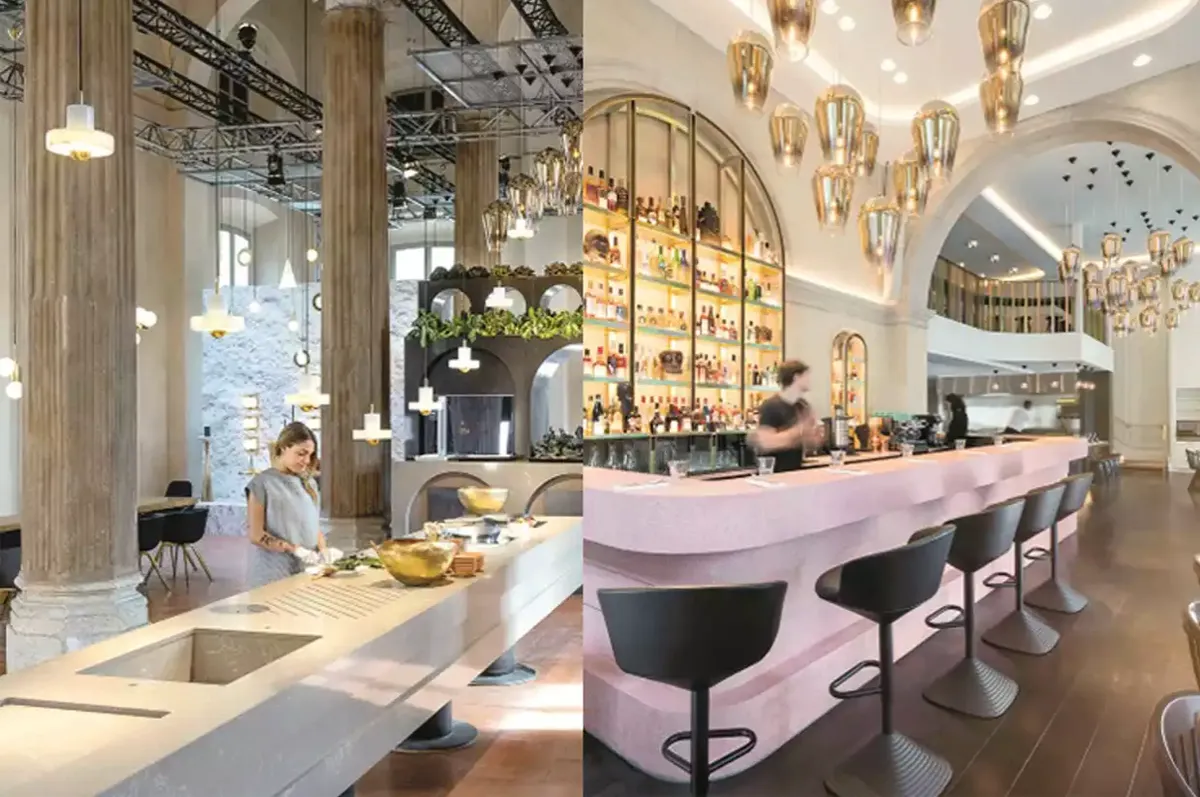From the stunning interiors of the Mondrian Hotel on London’s South Bank to the iconic S Chair, creative visionary Tom Dixon OBE has been making waves in the design world for nearly 30 years.
Tom's Copper Shade pendant alone is a familiar item in countless households and his other designs are much admired and copied. He is largely self-taught, leaving Holland Park Comprehensive School with a ceramics A-level, and cutting short his foundation course at Chelsea School of Art after six months, following a serious motorbike accident.
Instead, he picked up a welding torch and fashioned sculptures on stage as experimental performance art, giving him his break into the design world. He became creative director at Habitat in 1998 (until 2008) and established his own business Tom Dixon in 2002. This includes his Design Research Studio, which creates large interiors, installations and architectural design and the Dock Kitchen, a glass-fronted restaurant overlooking the Grand Union Canal, where he often helps out as sous chef.
We caught up with him to talk all things interiors...
How did your lack of formal training motivate you to succeed?
I've always enjoyed being inexperienced. By not being an expert, you can bring something new to the table as you look at everything with childlike eyes. Working with my hands and having a hand-to-mouth existence means you’re aware of what people will pay and what something has cost you. So it gave me an understanding of how the business side of things worked.
What do you think are the marks of good design?
Good design should improve things. Design is never a single thing; it is affected by trends and fashion, just like the music business or the food business. When you produce a design, you should be trying to improve on something that has existed before, whether that’s a better functionality, a life-changing new invention, or even just a nicer colour. My style is reductionist and constructivist, meaning I aim to make things simple, and I try to be informed about the means of manufacture.
What did last year’s collaboration with Caesarstone (for whom you produced four sculptural kitchens based on the four elements) tell you about kitchens?
Kitchens are the most popular places at parties. Cooking has become the new ‘showtime’. So, with the Caesarstone collaboration, I tried to open up what a kitchen could be, to express the functions that go within that, while making it look like a sculpture at the same time.

Tell us about your cooking duties at Dock Kitchen.
I’m bottom of the pile working on cold starters and desserts. I see the parallels between design and production and it’s another world to immerse yourself in. I’ve always been adamant that you get the best ideas when you leave your comfort zone and stop being the expert.
How did your new Bump collection come about?
It was inspired by my obsession with scientists’ laboratory apparatus and drinking ceremonials. It’s also an exploration, after years of working with metallics, into softer colours such as this beautiful subtle pink and smoky grey. Producing coloured borosilicate glass is also quite a technical achievement to note because this type of super resistant glass is usually clear.
Is there anything else you’d love to design?
There are hundreds of things, but I haven’t worked on any transportation yet. I am interested in architecture too, so it would be nice to do a bridge.

